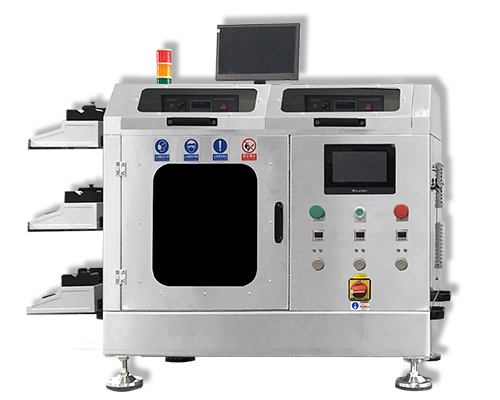Selection of Raw Materials for Degradable Stents
Selection of Raw Materials for Degradable Stents – Stent Coating – Cheersonic
Biodegradable materials include biodegradable polymer materials (natural and synthetic) and biodegradable metals (magnesium-based alloys, zinc-based alloys, and iron-based alloys). They can be metabolized, absorbed, or removed by tissues through degradation and corrosion.
Common materials
Degradable polymers
Using biodegradable polymer materials to make implantable medical devices is a current hot research direction. For example, absorbable polymer sutures for surgery have been made of regenerated collagen fibers since the 1960s, and in the past two or three decades, they have gradually been made of synthetic polyvinyl alcohol (PVA), polyglycolide (PGA), poly(Lactic-co-Glycolic Acid) (PLGA), polylactide (PLA), polydioxanone (PDS), polycaprolactone (PCL), polycarbonate (PC), etc.;
Degradable polymer bone nails and bone plates for orthopedics are made of PLGA, PLA, PDS, PCL and other materials. Products have been used in clinical treatment since around 2000; biodegradable polymer vascular stents have also entered clinical trials since around 2000, and their in vivo safety has been proven by a large amount of clinical data. Currently, the most commonly used materials are polylactide materials, such as PLLA, PDLLA, as well as PLGA, PCL, polycarbonate and other materials.
Problems: The mechanical properties are not as good as traditional metal stents, the wall thickness is thick, and it is easy to cause thrombosis risk. The safety and effectiveness of application in complex lesions need to be verified. The first generation of products have problems such as thick stent rods, large contours, poor tracking and delivery performance, easy rod breakage, thrombosis risk, corrosion and long absorption cycle.
Degradable magnesium-based alloys
Based on the good biological tolerance of magnesium, it has been widely studied. The normal range of magnesium in plasma is 0.70 ~ 1.05 mmol/L, and the toxicity threshold is 2.5 ~ 3.5 mmol/L. The recommended daily intake of magnesium for adults (240~420 mg) is 52.5 times that of iron (8~18 each) and zinc (8~11 mg). In addition, magnesium deficiency in the human body can lead to cardiovascular and neurological diseases.
The advantages are fast endothelialization and low thrombogenicity;
The disadvantages are poor mechanical properties, complex early degradation products, unknown absorption of in situ amorphous calcium-phosphorus substances, and lack of large-scale clinical data to prove its safety and effectiveness.
Absorbable zinc-based alloy
It has attracted attention due to the shortcomings of magnesium and iron alloys, but has made slow progress in the application of vascular stents due to mechanical properties. There are problems of processing softening, room temperature creep and aging, and although alloying improves mechanical properties, it brings biocompatibility problems. At present, the research and development of zinc metal materials is still in the basic research stage, and its application in implantable medical devices still requires a lot of laboratory research and clinical data support.
Degradable iron-based alloy
Compared with magnesium-based alloys, the strength of iron and its alloys is much higher, and through cold working, heat treatment, alloying or other modifications of materials, even excellent comprehensive mechanical properties comparable to cobalt-chromium alloys can be obtained.
High strength but slow corrosion and difficult to remove products. Although pure iron can be strengthened and the corrosion cycle can be adjusted, it is difficult to simultaneously obtain high corrosion rate and excellent mechanical properties without compromising biocompatibility, and the magnetism of iron and the corrosion product absorption mechanism are unclear.
Cheersonic provides a variety of ultrasonic coating equipment and solutions for manufacturing industry of implantable, in interventional medical devices, the drug-eluting stents and balloon catheters. Our ultrasonic coating systems have been used to spray anti-restenosis drug eluting polymer solutions onto implantable stents. Compared to conventional two-fluid nozzles, ultrasonic nozzles can spray a more uniform drug coating that completely covers the stent without the orange peel and adhesion to a complex stent. And the coatings are much thinner than can be achieved with dip coating, saving spray material.
- Ideal for R&D and low-volume production
- Compact desktop design that is easy to move
- The material usage ratio > 95%
- Reliable, repeatable and consistent coating, uniformity of ±5%
- Max. length 100mm, max. diameter 60mm
About Cheersonic
Cheersonic is the leading developer and manufacturer of ultrasonic coating systems for applying precise, thin film coatings to protect, strengthen or smooth surfaces on parts and components for the microelectronics/electronics, alternative energy, medical and industrial markets, including specialized glass applications in construction and automotive.
Our coating solutions are environmentally-friendly, efficient and highly reliable, and enable dramatic reductions in overspray, savings in raw material, water and energy usage and provide improved process repeatability, transfer efficiency, high uniformity and reduced emissions.
Chinese Website: Cheersonic Provides Professional Coating Solutions


